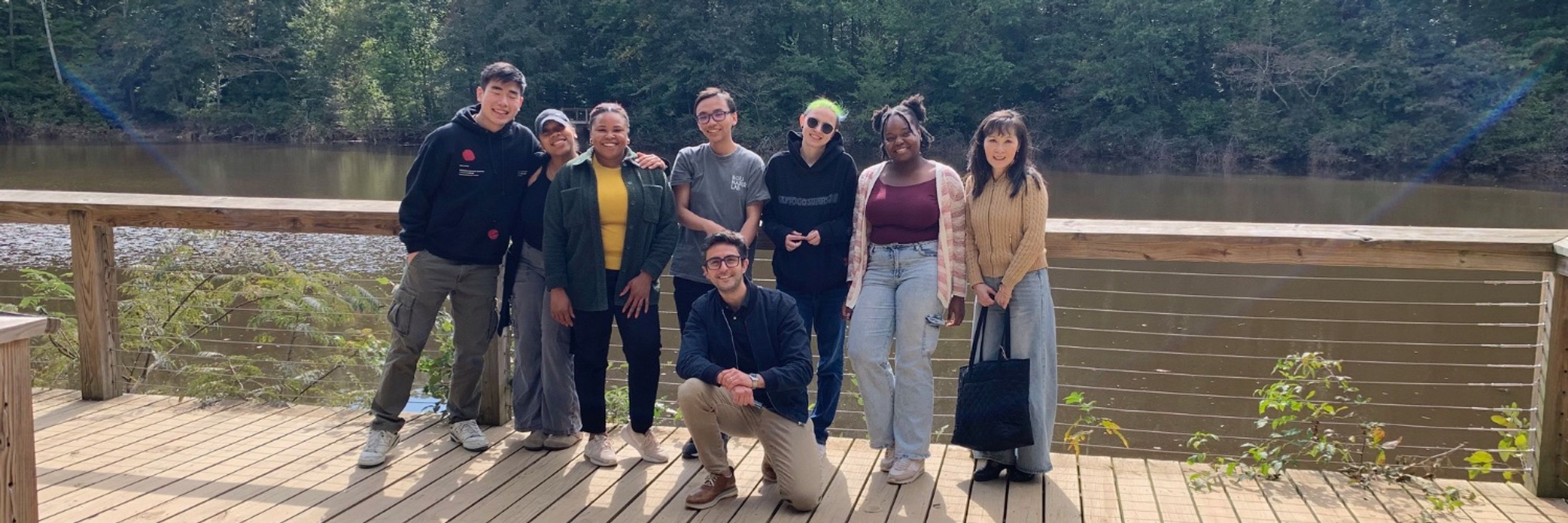
https://biochem.emory.edu/bou-nader-lab/
#BYI #beckman #science #grants #academia #chemistry #lifesciences

@cp-cellhostmicrobe.bsky.social ! We revealed a previously unrealized diversity of viral immune-evasion proteins that selectively destroy different cyclic nucleotide signals used in bacterial immunity.
www.sciencedirect.com/science/arti...

Elegant PNAS paper on the ComEC/ComFA/ComFC complex in bacterial transformation. AF3 predictions validated by clever mutagenesis. We tried for years to solve this by cryo-EM/crystallography - never succeeded.

Elegant PNAS paper on the ComEC/ComFA/ComFC complex in bacterial transformation. AF3 predictions validated by clever mutagenesis. We tried for years to solve this by cryo-EM/crystallography - never succeeded.
Selfish genes are found across the tree of life. They can disrupt inheritance patterns and at the same time act as units for molecular innovation. Here we tried to answer one big question: how do selfish genes emerge in the first place?
www.nature.com/articles/s41...

Selfish genes are found across the tree of life. They can disrupt inheritance patterns and at the same time act as units for molecular innovation. Here we tried to answer one big question: how do selfish genes emerge in the first place?

www.nature.com/articles/s41...

www.nature.com/articles/s41...




www.biorxiv.org/content/10.1...

www.biorxiv.org/content/10.1...




genesdev.cshlp.org/cgi/content/...
genesdev.cshlp.org/cgi/content/...
academic.oup.com/nar/article/...

academic.oup.com/nar/article/...
www.nature.com/articles/s41...

www.nature.com/articles/s41...
www.science.org/doi/10.1126/...
@unmc.bsky.social @uwbiochem.bsky.social

www.science.org/doi/10.1126/...
@unmc.bsky.social @uwbiochem.bsky.social
We describe a new tetrameric RAD51 paralog complex – XRCC3-RAD51C-RAD51D-XRCC2 – which caps the end of RAD51 filaments.
Link: www.science.org/doi/epdf/10....
Thread ⬇️ (1/8)
We describe a new tetrameric RAD51 paralog complex – XRCC3-RAD51C-RAD51D-XRCC2 – which caps the end of RAD51 filaments.
Link: www.science.org/doi/epdf/10....
Thread ⬇️ (1/8)
@wyssinstitute.bsky.social
journals.asm.org/doi/10.1128/...

@wyssinstitute.bsky.social
journals.asm.org/doi/10.1128/...
Abbey Vito’s first publication discusses a tug-of-war between BER enzymes and chromatin for access to damaged DNA, a battle central to genome stability.
Built on Tyler's foundational work! tinyurl.com/ywkt2bt5

Abbey Vito’s first publication discusses a tug-of-war between BER enzymes and chromatin for access to damaged DNA, a battle central to genome stability.
Built on Tyler's foundational work! tinyurl.com/ywkt2bt5


The Human RNome Project has been launched: a global effort to map all human RNAs and their chemical modifications. Proud to support it and contribute to the article in Genome Biology doi.org/10.1186/s130...
#RNA #bioinformatics #RNAstructure #modomics

The Human RNome Project has been launched: a global effort to map all human RNAs and their chemical modifications. Proud to support it and contribute to the article in Genome Biology doi.org/10.1186/s130...
#RNA #bioinformatics #RNAstructure #modomics

